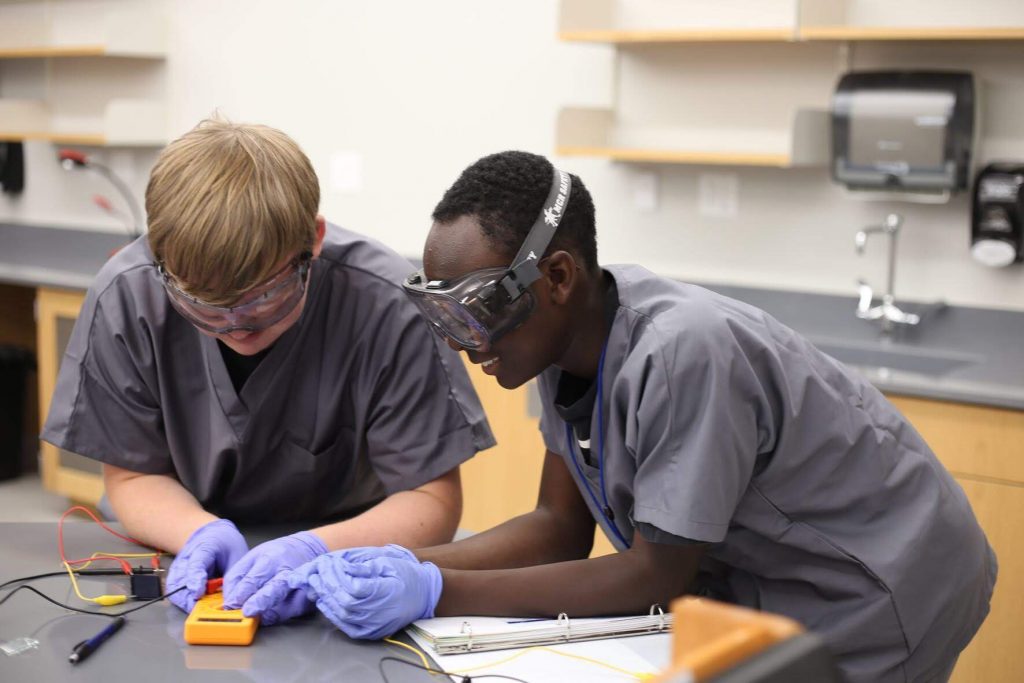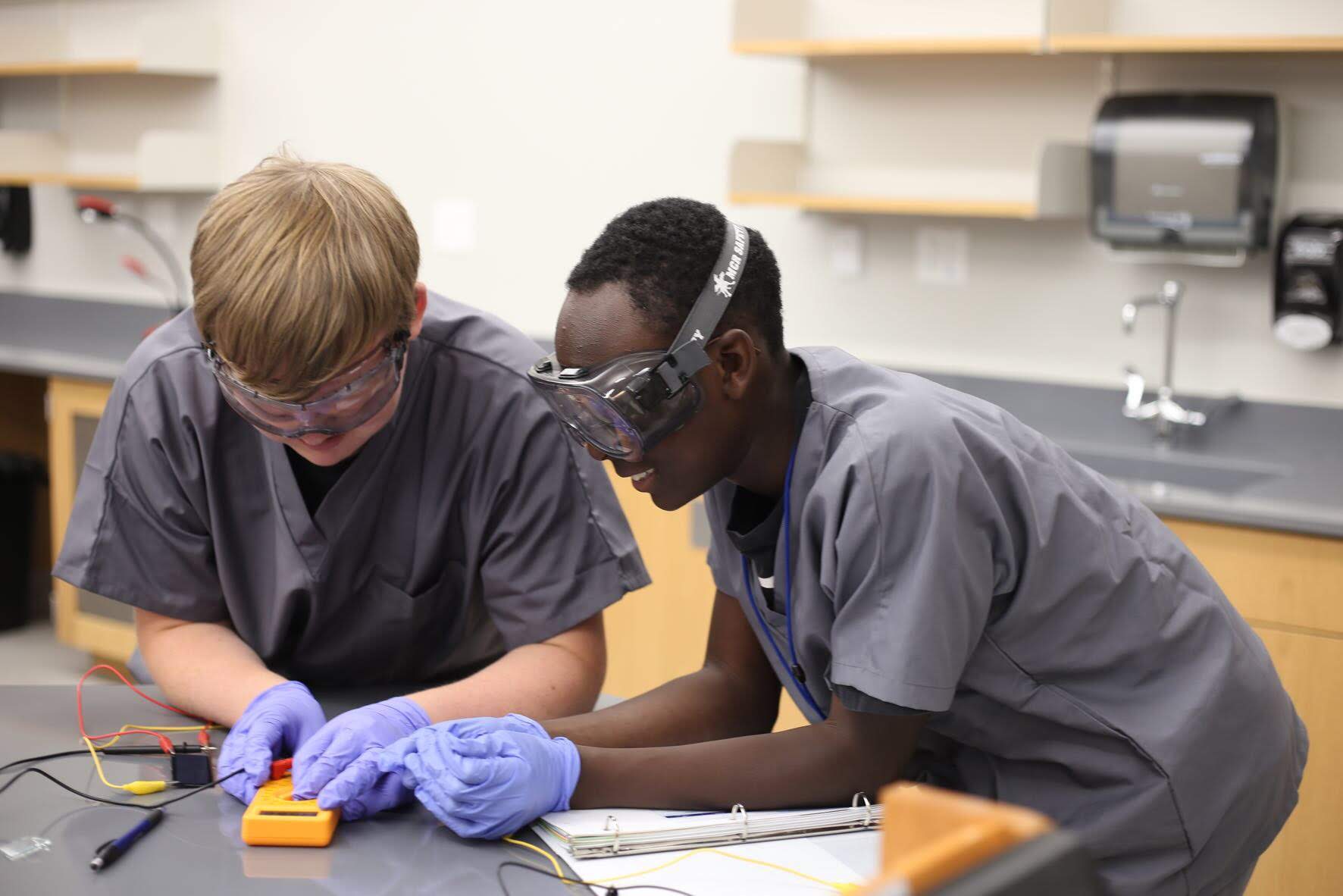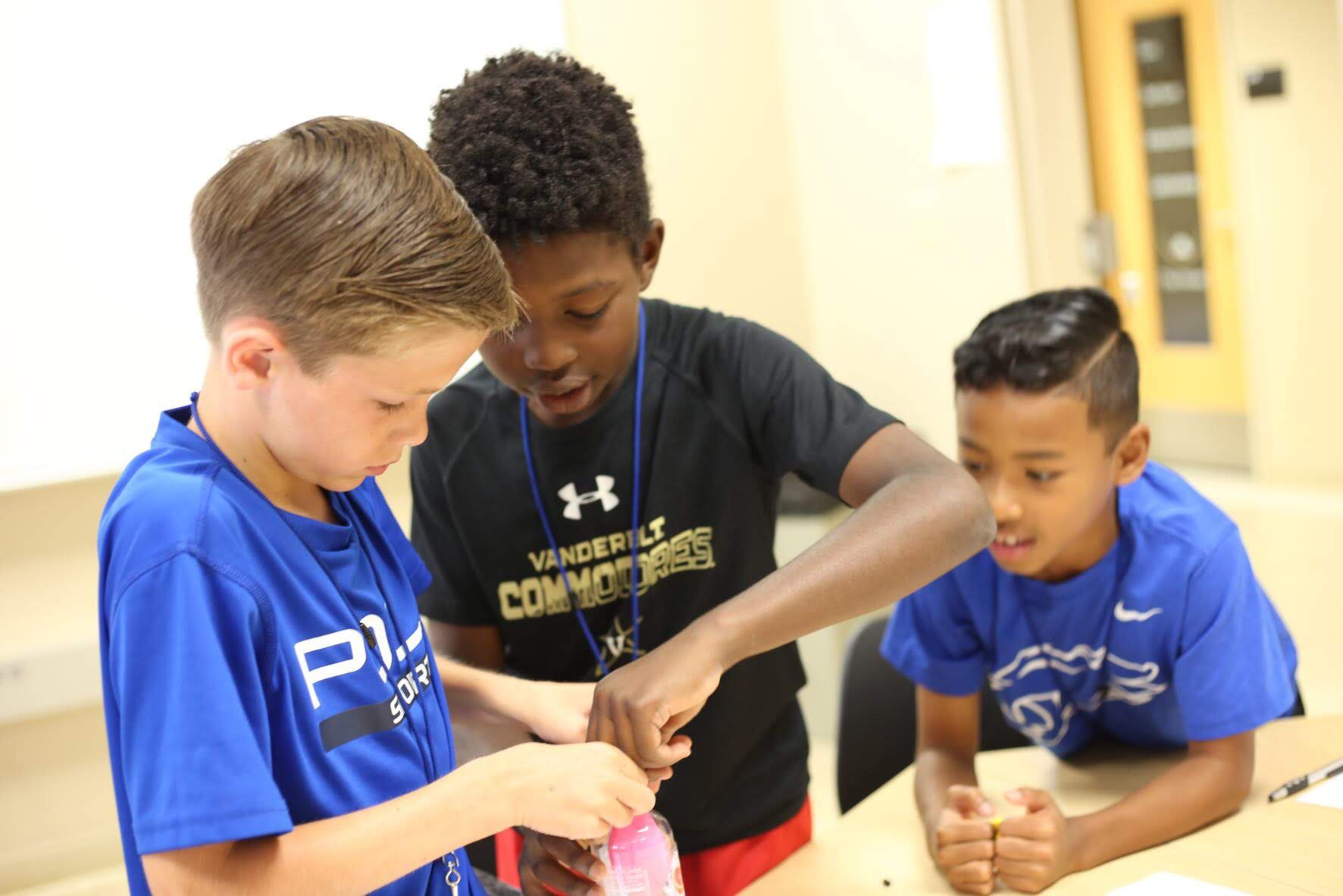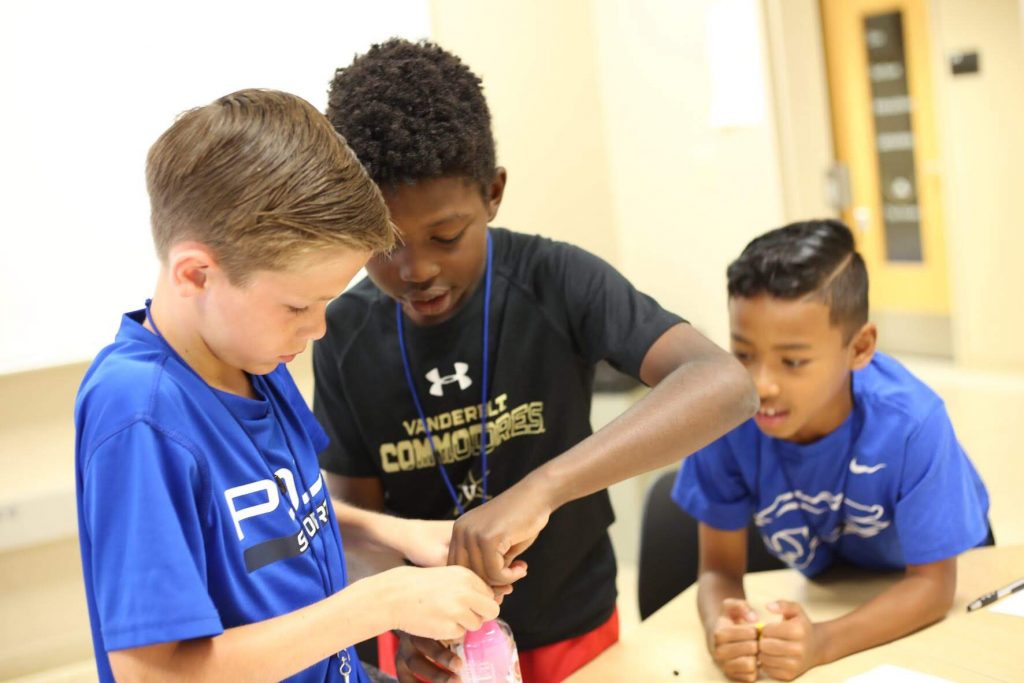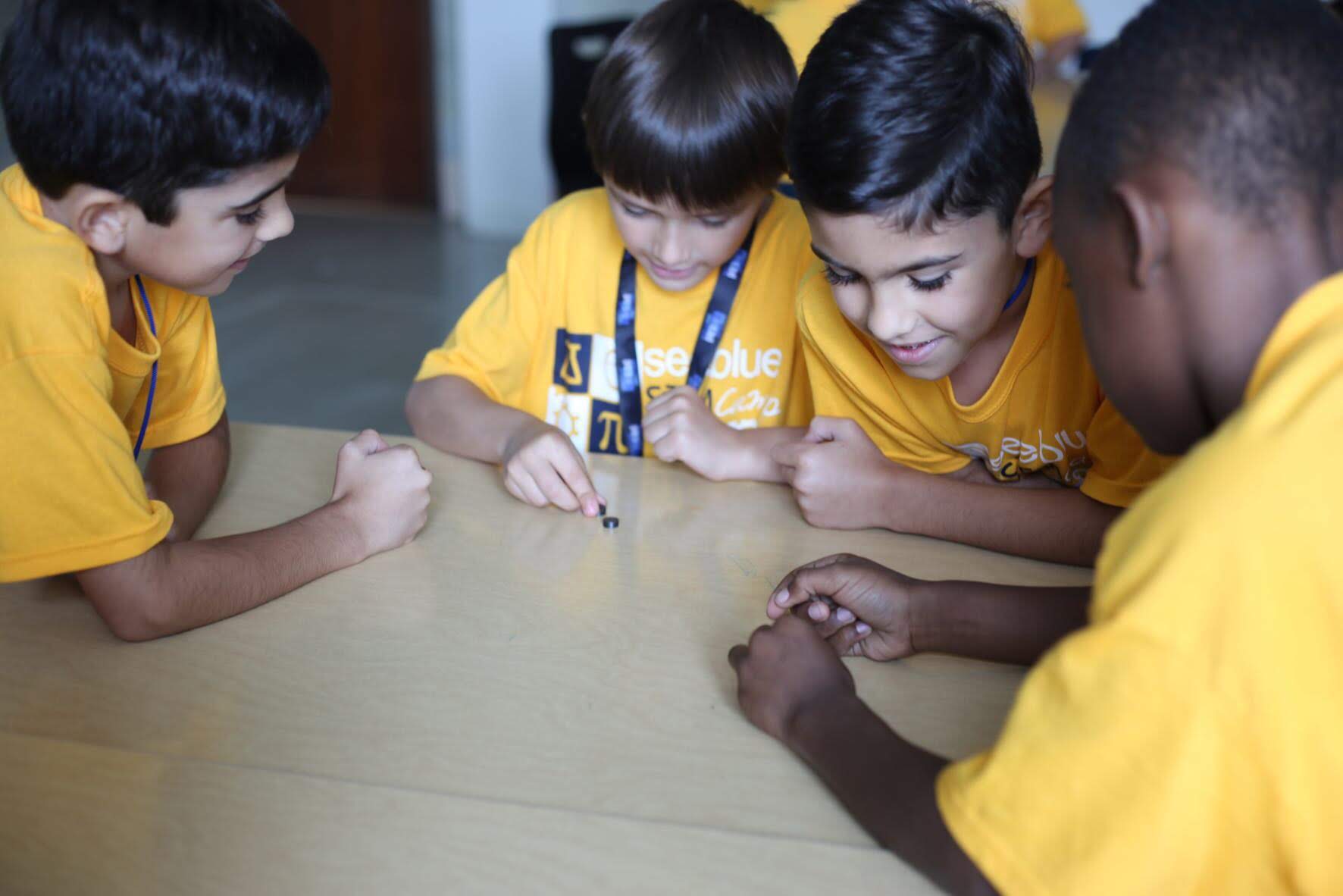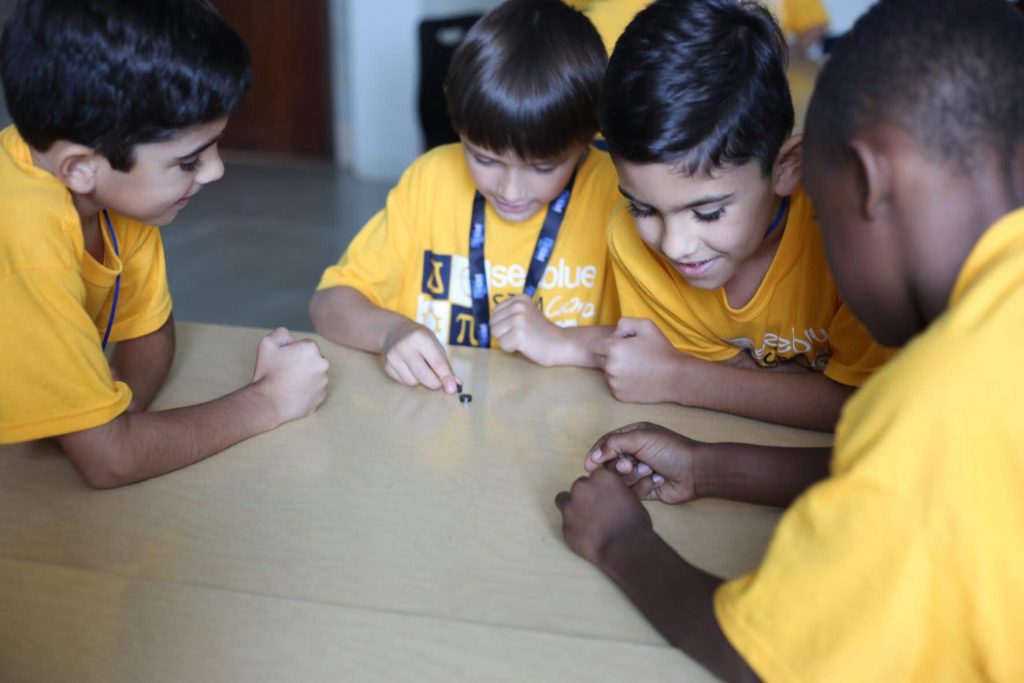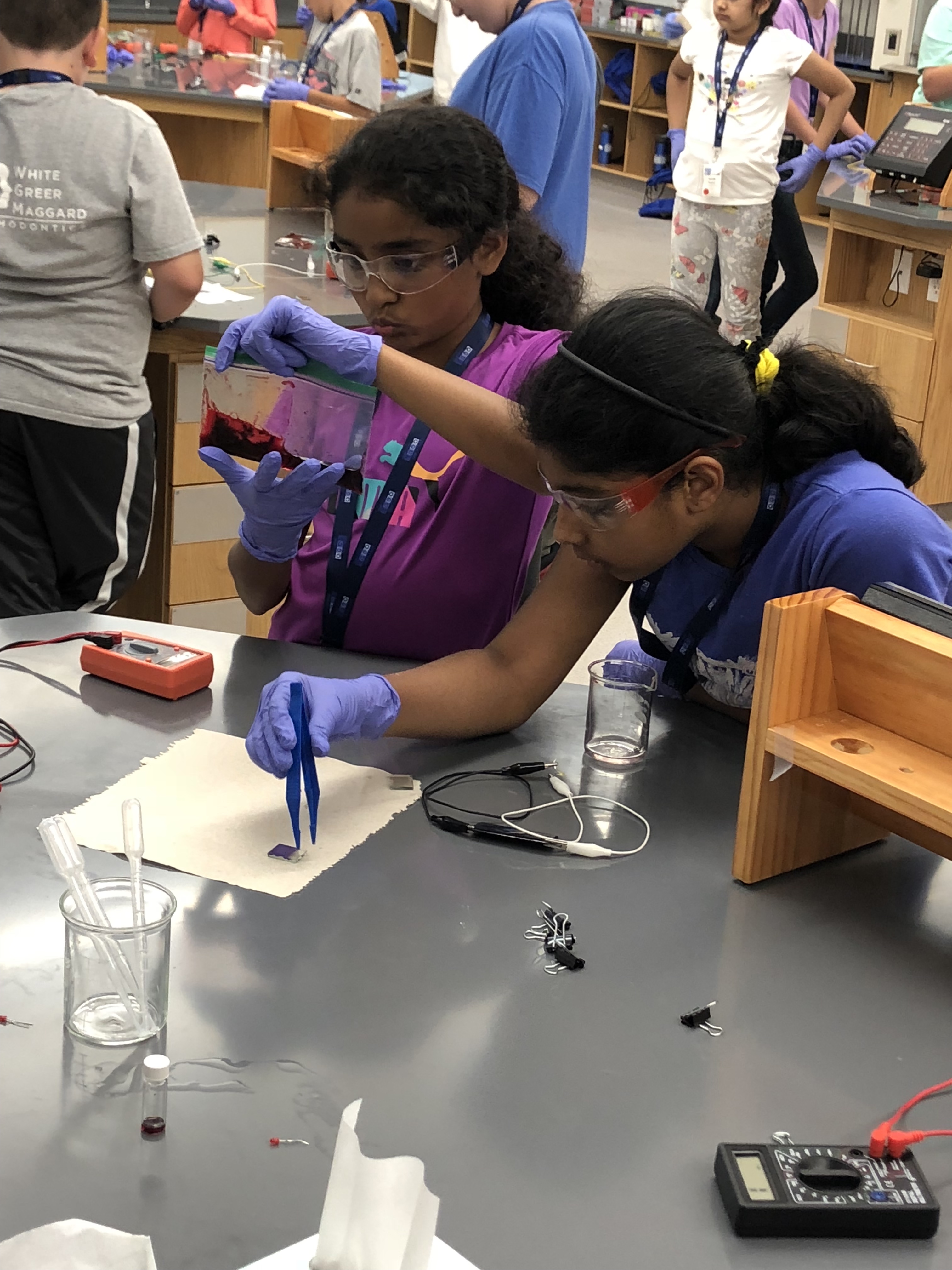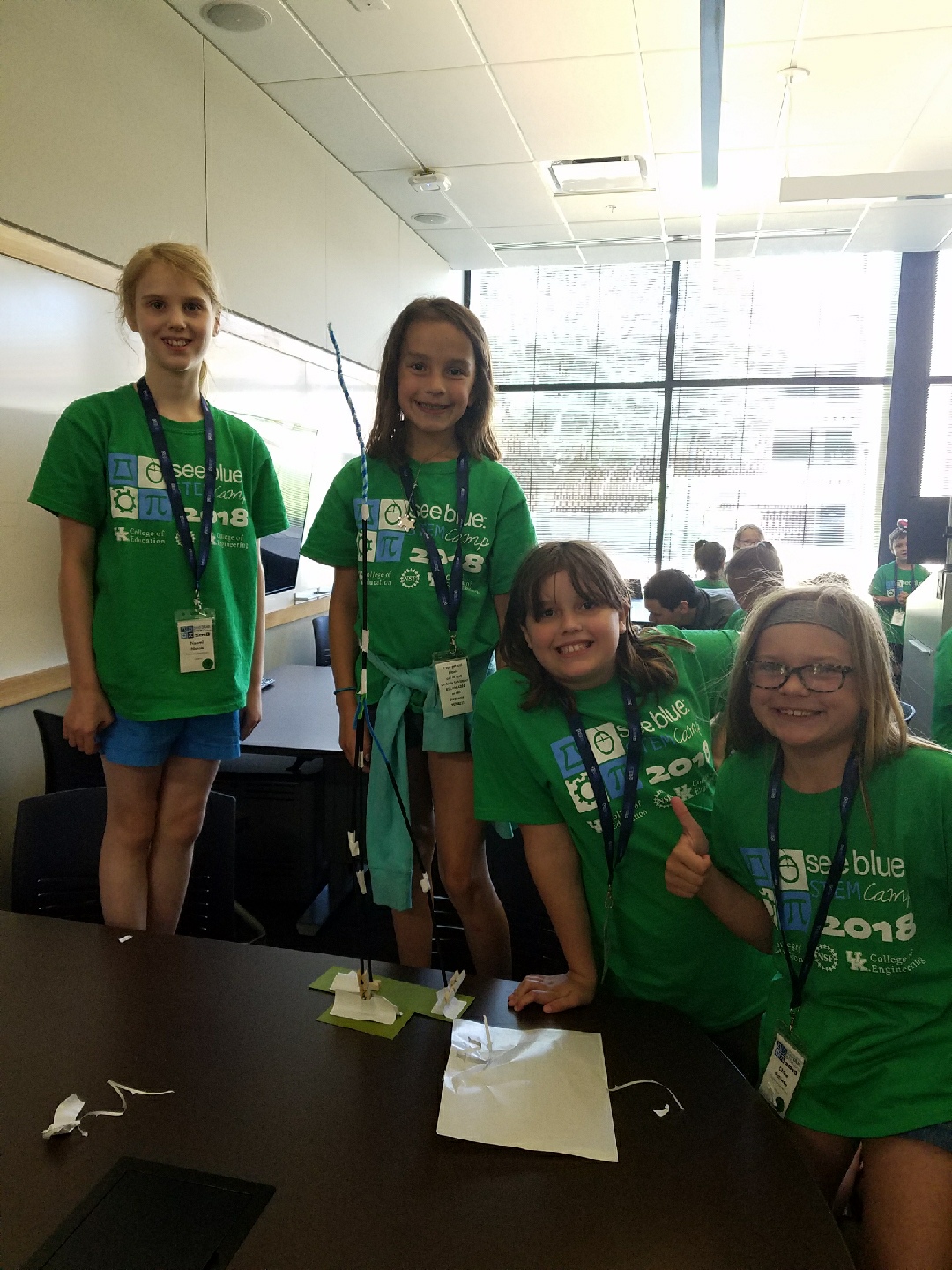After a rainy morning, we really enjoyed the cooler weather and another fabulous hands on STEM day. I can’t believe tomorrow is the last day of camp and that will close out our month of STEM camps on campus. It’s always sad to come back the next week to the quiet halls of the buildings.
The red and blue groups spent the day with Dr. Haley Bergstrom and her team learning about fitness, human performance, and how we can use STEM to explore, investigate and learn more about the body. The students learned to take the pulse and conducted an investigation about how pulse can change with physical activity. In robotics, the theme was Things that Move. They had the choice to build a race car, lunar bot, pull bot, trash or recycle truck, street sweeper, etc. They had a lot of fun and were very creative in what they built and added to their robot! They even had some races going.
In the yellow and green groups, they got to learn about labs on a chip and conduct some investigations. They looked at the properties of different types of liquids and the pros and cons of each. They used microscopes to make observations about the properties. They even learned how to make fake blood! The orange and pink groups spent the day with Dr. Walcott and his team for some electrical engineering. They took tours of the engineering complex at UK and got to see a lot of the research laboratories and here about some of the investigations going on. They learned how to build a computer and built their own computer with arduinos. They had a lot of fun testing them out to see if their wiring worked! In robotics, they dove into the First Lego League Challenge – Trash Trek. Many were trying to move pieces from one place to another and to pick up objects and move them. This takes precision and patience to code and they did a fantastic job with it!
ChemCamp had another great day in the lab! They spent part of the day with Dr. Kenneth Graham. They dove deep into the chemistry of solar cells and how we can use natural resources to create solar cells, especially ones that are flexible. They also completed some investigations on polymer efficiency.
In Their Own Words…
- that some bloob from your heart goes to your lungs and then your body.
- That old people have mor blood than children.
- I want to learn more about heart parts.
- I learned what a micro fluidic mixer chip is and what it does
- How fake blood is made
- I learned how to build a compute.
- I learned that 10 fingers could actually be 1024 different combinations.
- The difference between analog and digital computers
Conversation Starters…
Red/Blue Groups
- How do you take your pulse? Why is it important to take your pulse?
- What happened to your pulse after you ran around outside?
- How did you create a model of the lung and diaphragm?
- How do the lung, heart and diaphragm work together?
- What did you build with your robot today? How did you make it move?
Yellow/Green Groups
- What is a lab on a chip?
- What did you observe under the microscope?
- How do you make fake blood? What do we use it for?
- What challenge(s) did you complete with your robot today? What are you hoping to achieve or complete tomorrow?
Pink/Orange Groups
- How do you build a computer?
- What was the most interesting thing you learned on the tour today?
- What challenge(s) did you complete with your robot today? What are you hoping to achieve or complete tomorrow?
ChemCamp
- How do you make a solar cell?
- What kind of materials are good conductors?
- What would we use a flexible TV for?
- Why would flexible solar cells be useful?
Picture of the Day…
